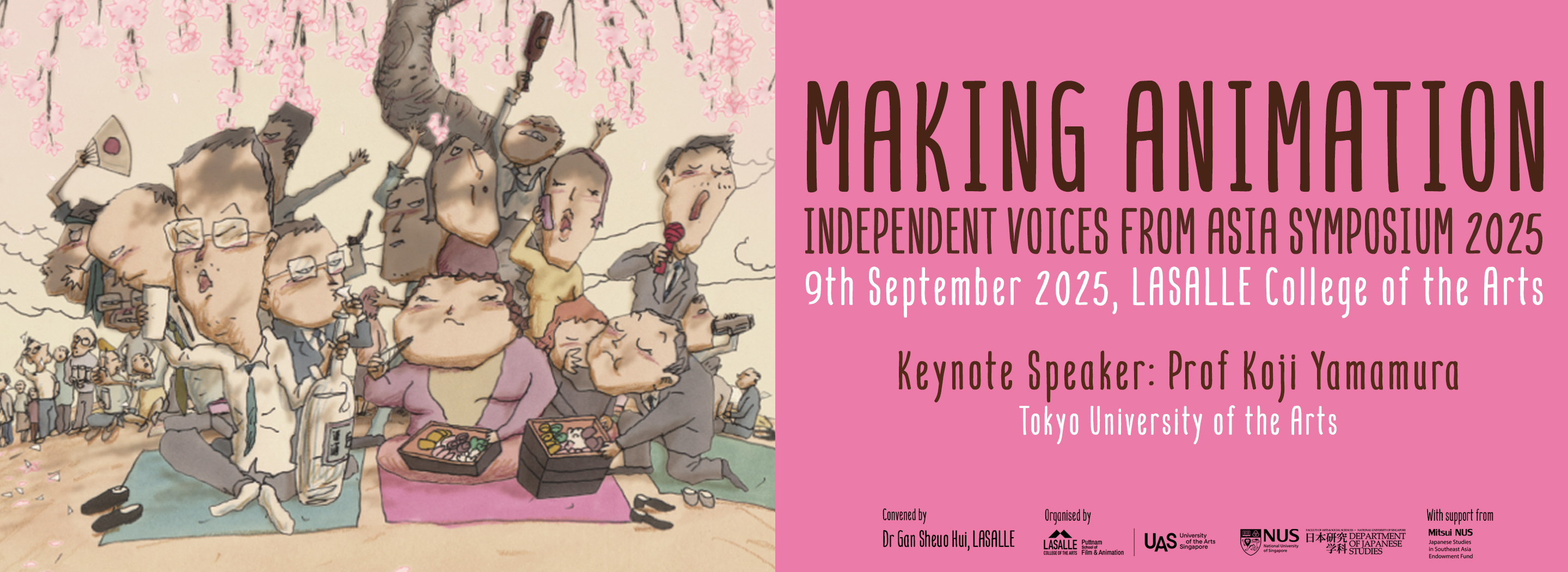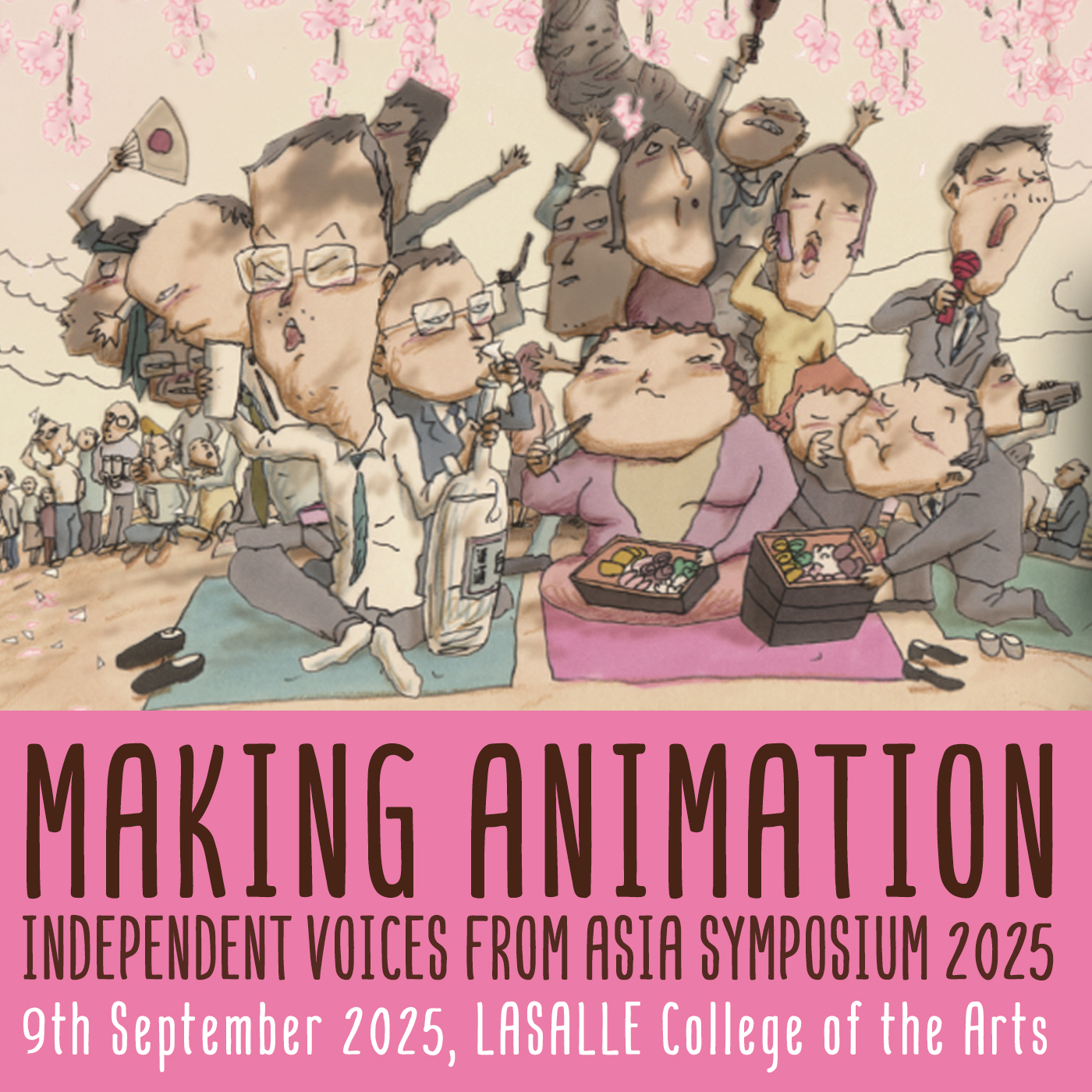Date
9 Sep 2025
Venue
Lecturer Theatre
Block F Level 2 #F202
LASALLE College of the Arts
1 McNally Street
Singapore 187940
Contact
animation.symposium@lasalle.edu.sg
Convened by
Dr Gan Sheuo Hui
Puttnam School of Film & Animation, LASALLE College of the Arts
Advisors
Assoc Prof Lim Beng Choo
Head, Department of Japanese Studies, National University of Singapore
Head, Puttnam School of Film & Animation, LASALLE
Registration
The symposium is open to all and free of charge. Registration is required.
Making Animation 2025 looks to independent animation for inspiration in expression, craft, and storytelling that stay close to observation, imagination and the touch of the hand. In today’s fast-moving visual culture where cinema, streaming and social media increasingly converge, the symposium asks what keeps stories meaningful, and which skills and sensibilities matter as habits and technologies change. These questions guide a focus on solo and small-team practices valued for self-expression, craft and reflective storytelling. Keynote speaker Yamamura Koji treats animation as giving shape to “invisible movements of light beyond reality,” favouring imagination and “thinking with the hands” over copying and algorithmic styling.
The morning frames the discussion. Gan Sheuo Hui (LASALLE) examines how anime-styled filters and AI shorts drive trend-led mimicry and asks where replication ends and expression begins. Lim Beng Choo (NUS) considers post-COVID experiments in noh and kabuki with VR and AI, keeping performers and embodied practice central. Akiho-Toyoda Noriko (Niigata University of Health and Welfare) presents an occupational therapy collaboration that uses animation to clarify the field’s holistic approach and foreground storytelling as care. Usui Michiko (Kanto Gakuin University) revisits Utsushi-e, a magic-lantern theatre, to show how voice, music and timing turn technique into story.
The afternoon turns to practice. Yamamura Koji deepens this theme, tracing a line from hand-drawn films to VR experiments, reflecting on materiality, timing and image-making beyond replication (Japanese with consecutive translation). Lefty Julian (Malaysia), a documentary comics creator, shares Making George Town, rooted in community stories and cultural memory. NOvia Shin (Malaysia), a multidisciplinary creator, presents Let the Map Speak, mapping overlooked everyday details through layered media and quiet storytelling (Mandarin with consecutive translation). Together these voices show how independent practice shapes meaningful animation and connected practices today.
Schedule
10:30am–11:00am
Welcome and introduction
11:00am–12:00pm
Session 1: Research sharing
Moderated by: Dr Du Lin, NUS
- 11:00am: Anime‑Styled Filters in Everyday Media: Replication vs Expression by Dr Gan Sheuo Hui, LASALLE
- 11:10am: Coupling Noh and Animation the VR Way by Assoc Prof Lim Beng Choo, NUS
- 11:20am: From Utsushi-e to Japanese Anime: Contemporary Reinterpretations of Traditional Japanese Storytelling through Utsushi-e by Prof Usui Michiko, Kanto Gakuin University
- 11:30am: Beyond the Screen: Animating Social Purpose in an Interdisciplinary Collaboration by Assoc Prof Akiho-Toyoda Noriko, Niigata University of Health and Welfare
- 11:40am: Q&A
12:00pm–1:00pm
Lunch
1:00pm–2:30pm
Session 2: Keynote by Koji Yamamura
Moderated by: Dr Gan Sheuo Hui, LASALLE
Keynote will be followed by a 15-minute Q&A
2:30pm–3:00pm
Break
3:00pm–4:00pm
Session 3: Documenting Our Fading Culture Through Art 以圖文紀錄消失中的文化 by Lefty Julian
Moderated by: Chris Shaw, LASALLE
Talk will be followed by a 15-minute Q&A
4:00pm–5:00pm
Session 4: Let the Map Speak: Fieldwork, Paper Layers & Framing a Moment 这个故事生锈了!副:让地图会说话:田野、纸层与定格的实践 by NOvia Shin
Moderated by: Dr Yuen Shu Min, NUS
Talk will be followed by a 15-minute Q&A
5:00pm
Symposium ends
Symposium information
Welcome to Making Animation 2025: Independent Voices from Asia.
Thank you for being here. We planned this gathering with a simple aim: to listen closely to how work is actually made by hand, watched on screens and across languages, and hear why these stories matter to the people who make and share them. As platforms overlap and the use of generative AI becomes commonplace, Making Animation 2025 asks what animation can do now and what makers need to do it well.
The morning’s programme lays the groundwork. Gan Sheuo Hui (LASALLE) traces anime-styled filters and AI shorts to ask where replication ends and expression begins. Lim Beng Choo (NUS) considers noh and kabuki experiments with VR/AI while keeping performers and embodied practice central. Akiho-Toyoda Noriko (Niigata University of Health and Welfare) shares an occupational-therapy collaboration that uses animation to clarify holistic care. Usui Michiko (Kanto Gakuin University) revisits Utsushi-e, showing how voice, music and timing turn technique into story.
In the afternoon we look to independent practice for grounded methods and reflective storytelling. Keynote speaker Yamamura Koji reflects on “invisible movements of light”, from hand-drawn films to VR (Japanese with consecutive translation). Lefty Julian (Malaysia) presents Making George Town, a documentary comics project rooted in community memory. NOvia Shin (Malaysia) shares Let the Map Speak, where layered media turn quiet observation into narrative (Mandarin with consecutive translation).
Students are woven through the programme as MCs, interpreters, photographers and interviewers producing special features for the school. Co-organised by LASALLE College of the Arts and the National University of Singapore, this programme is made possible by colleagues, students, volunteers and partners. Please listen with care and generosity, and may these independent voices renew your energy, show how observation becomes imagination, and how layered stories still move people.
Convened by:
Dr Gan Sheuo Hui
Advisors:
Associate Professor Lim Beng Choo, Head, Department of Japanese Studies, NUS
Chris Shaw, Head, Puttnam School of Film & Animation, LASALLE
Organised by:
Puttnam School of Film & Animation, Faculty of Fine Arts, Media & Creative Industries, LASALLE College of the Arts
Co-organised by:
Department of Japanese Studies, Faculty of Arts and Social Sciences, National University of Singapore
Supported by:
Mitsui NUS Japanese Studies in Southeast Asia Endowment Fund
Niigata University of Health and Welfare
Kanto Gakuin University
Project manager: Choi Eunji
Project assistants: Azsmaan Zayne, Fu Meijo
Administrative assistants (NUS): NUS, Department of Japanese Studies
Administrative assistants (LASALLE): Karen Cheok
Copy editor: Ailin Chin, Alex Soo
Web design: Ailin Chin
Technical support: Brian Hong
Poster design: Chris Shaw, Koji Yamamura
Consecutive interpretation for Koji Yamamura provided by: Tomoko Shiga
Consecutive interpretation for NOvia Shin provided by student volunteers: Chen Zijia, Lin Tian, Qu Lemeng
Student emcees: Larvett Chong, Lee Jungha, Qiran Ocean Abdullah Davidson
Student volunteers: Ang Swee Tung, Averil Jodie Koh, Belyta Yip May Wai, Duangkamol Kwek, Georgie Tng, Grace Tan, Katherine Lee Viryawira, Kim Jin Sol, Lam Su Ting Charmaine, Leong Yi Shan, Madeleine Erlangga, Mayla Adisa Nurulhana, Ruth Tang Ru, Ryan Goh, Sarisa Balqis Thampirak, Sim Pei Ksuen Jessley, Tansha Surendra
Student photographers: Althea Margaux Penaranda Desepeda, Jasmine Pandey, Noh Heui Yong, Nuha Alia Binte Jaabir Abdul Khaaliq, Wen Caiwei, Yee Chern Nah
Videographer: Brian Hong
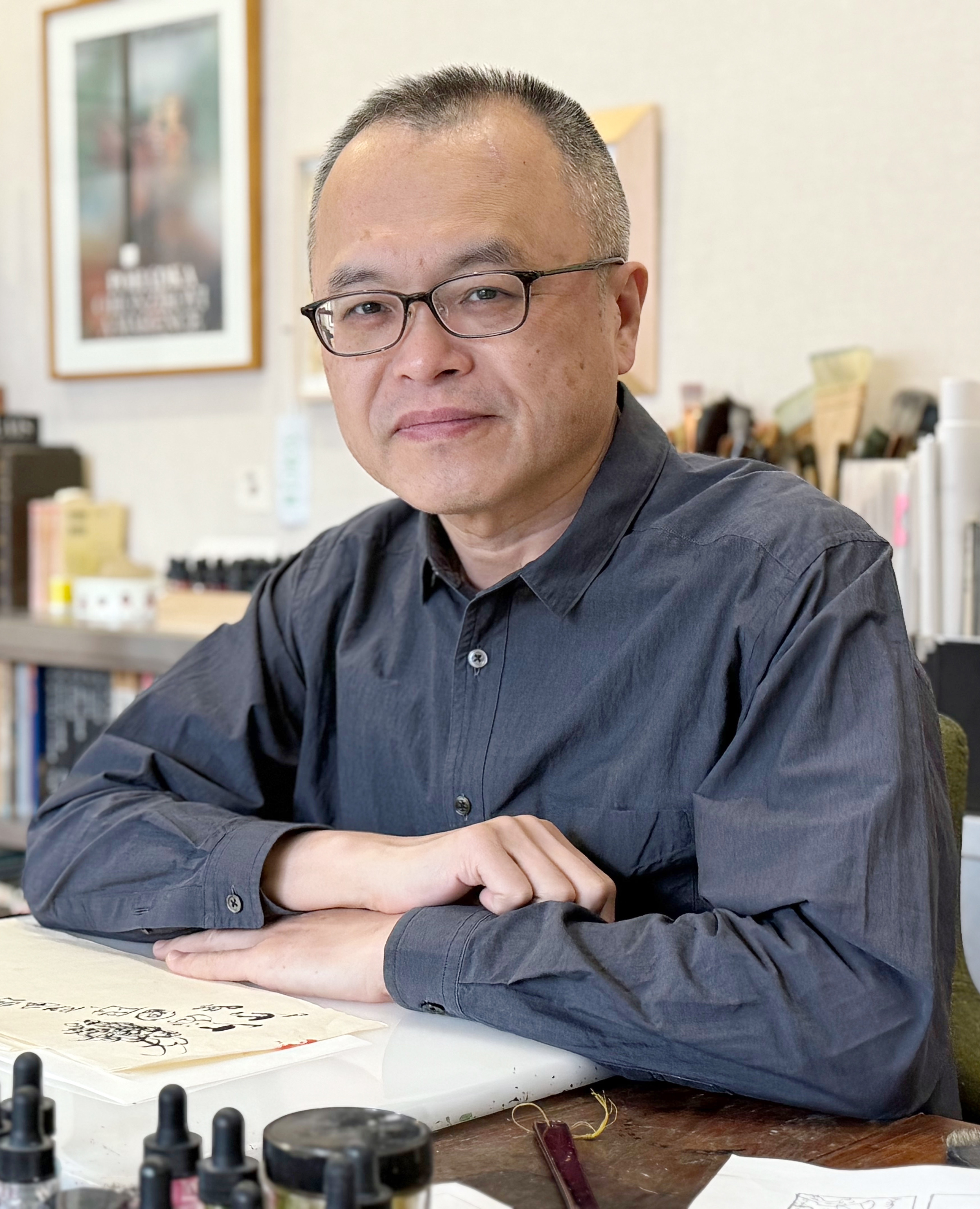 |
Koji Yamamura was born in Japan in 1964. His film Mt. Head (2002) won six Grand Prix, was nominated for an Oscar for Best Animated Short, and was selected for Annecy Festival's '100 Films for a Century of Animation'. Yamamura's filmography, including Franz Kafka's A Country Doctor (2007) and Dozens of Norths (2021), has received more than 155 awards, including 21 Grand Prix for his directorial work. His most recent film Extremely Short (2024) was officially selected for Directors' Fortnight at Cannes Film Festival. Yamamura is also an active picture book author with 100 titles published, including Viva Vegetables!, which has over 500,000 copies published, and Parade. He was awarded the Kawakita Prize and the Art Encouragement Prize in Japan, and received the Medal with Purple Ribbon in 2019. A member of the Academy of Motion Picture Arts and Sciences, he is visiting professor at Tokyo Zokei University, China Academy of Art and Aichi University of the Arts, and has been a professor at Tokyo University of the Arts since 2008. |
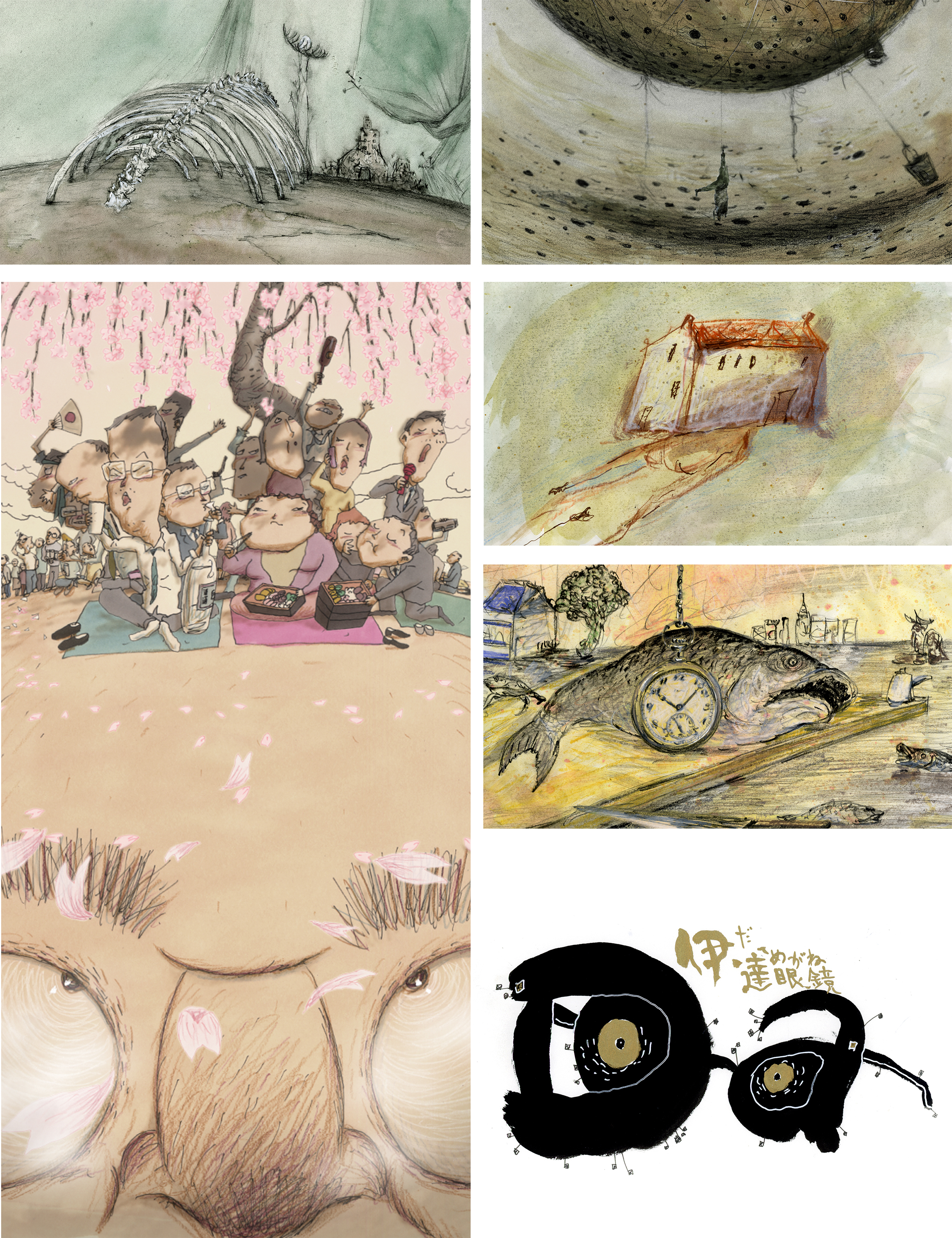
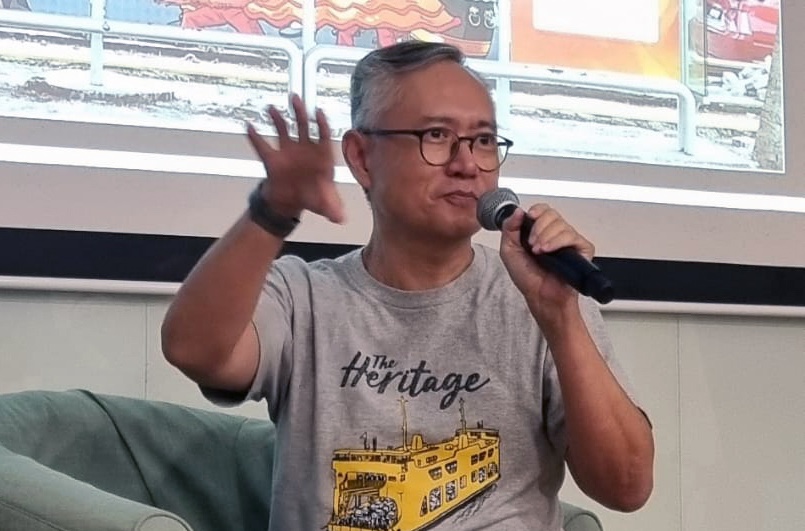
Interview by Chris Shaw
Head, Puttnam School of Film & Animation.
A guest speaker at this year’s Making Animation symposium was Julian ‘Lefty’ Kam, a distinguished comic book artist and cultural documentarian. With over 25 years of experience in the comic industry, Lefty has worked across Malaysia, Singapore, Shanghai and the United States, serving in key roles such as editor-in-chief of Left Pocket Creatives in Shanghai and as a lecturer and course planner at The One Academy in Penang.
Lefty is perhaps best known for his ability to blend graphic storytelling with cultural heritage documentation. His work includes the Marking George Town steel rod sculpture series, the Pulau Tikus Community Stories bus stop art, and the Butterworth Heritage Interpretation panels. Through these and many other projects, he has turned comics into a living archive of Malaysian history and everyday life.
His long-term undertaking, Sama-Sama: A Multicultural Art Journey, reflects his commitment to celebrating Malaysia’s multicultural heritage. By collaborating with cultural practitioners and adopting a multisensory, site-specific approach, Lefty brings to light the intangible connections that shape our diverse communities.
Beyond heritage-focused projects, Lefty is also the founder of Gilamon Studio and the creator of the acclaimed comic series Major Zombie, which won multiple awards and has been featured at international conventions. His documentary comics, combining elements of journalism, biography and sequential art, have been exhibited internationally from Taiwan to Hong Kong, and continue to inspire audiences across generations.
At the heart of his work lies a profound love for Penang and for Malaysia’s harmonious way of living. His comics capture not just images, but memories, traditions, and stories, making them powerful vessels for cultural preservation.
On career and creative journey
Chris: You’ve worked in Malaysia, Shanghai, Singapore and the US, how have these different environments shaped your approach to comics and storytelling?
Lefty: Each country has its own requirements, local elements and language, so I approach every environment with preparation, respect and a willingness to collaborate with local talents. Immersing myself in those contexts helps the work feel authentic.
At the same time, the foundation of a good story never really changes; it’s the universal part of storytelling. What differs is how you package and present it so it speaks to each audience in their own cultural language.
Chris: You’ve balanced being an artist, editor and lecturer. How have these roles informed one another in your practice?
Lefty: These roles complement one another and make the creative process more fluid. Because I’m familiar with each area, I can move between them with less overlap and greater clarity. At the same time, I recognise that I can’t, and shouldn’t, do everything alone. For example, when I’m writing a story, I still need an editor to challenge my ideas and keep me on track, just as I do when I edit for others.
Teaching also sharpens this cycle, because explaining concepts to students often deepens my own understanding. Together, these roles create a system of checks, balances and continuous learning in my practice.
On cultural documentation
Chris: Much of your work, such as Sama-Sama and I Am Home, documents Penang’s heritage. How do you decide which aspects of culture or memory to preserve through comics?
Lefty: After conducting extensive research, I usually create a list of significant themes or topics that emerge. I then discuss these with research scholars to ensure I’m approaching them with accuracy and sensitivity. From there, I decide which elements to highlight, based not only on their cultural importance but also on their potential to resonate emotionally with readers. That way, what I choose to preserve through comics is both meaningful and engaging.
Chris: You’ve often said that comics can succeed where photography or archives fall short. Can you expand on why sequential art is such a powerful tool for cultural documentation?
Lefty: Sequential art allows readers to visualise a story in ways that photography or text alone can’t. Unlike static images, comics create a sense of movement and continuity, the story comes alive and unfolds in the reader’s mind. It’s also more immersive than pairing text with pictures, because the two are inseparable in this medium. In a way, comics animate themselves within the imagination of the audience, offering both the depth of literature and the immediacy of visuals, and best of all, without the cost of full animation.
On process and collaboration
Chris: Your projects often involve collaboration with ethnographers, historians and fellow artists. How do these collaborations enrich your work?
Lefty: Collaborating with specialists such as ethnographers and historians brings valuable layers of insight, grounding the work in depth and context that I couldn’t achieve alone. When it comes to fellow artists, I often seek out those whose styles are very different from mine. It’s a way of experimenting, seeing how contrasting voices and approaches can merge to create something unexpected and fresh. These collaborations not only enrich the project but also expand my own perspective as an artist.
Chris: You’ve also mentioned adopting a “multisensory approach” in your art. Could you describe how sound, smell or other senses influence your visual storytelling?
Lefty: A multisensory approach helps deepen and enrich the storytelling. I try to translate my own experiences, whether it’s the atmosphere of a place, the sound of a street, or even the scent of food, into words and sequential art. The goal is for readers to connect those cues with their own memories and senses, so they don’t just see the story, but also feel it. In that way, the work becomes more immersive and personal.
On challenges and opportunities
Chris: What are some of the biggest challenges of sustaining a career in comics in Malaysia, especially when balancing commercial work with passion projects?
Lefty: Unfortunately, meaningful projects never come as often as we’d like, so it’s necessary to take on more commercial work to sustain a livelihood. This challenge isn’t unique to Malaysia. Being a graphic novelist is difficult anywhere in the world. I’m grateful, though, that I can still remain within the creative field, without having to step into something unrelated just to support my family. That balance, even when it leans toward commercial work, allows me to keep my identity as an artist intact.
Chris: How do you navigate the tension between preserving tradition and embracing modern, even digital, tools for your comics?
Lefty: I have nothing against new technology. In fact, I find it fascinating to see how it reshapes the creative landscape. I believe artists should explore with an open mind, testing different tools and approaches. The key is to choose methods that enhance and elevate your work, pushing you further, rather than relying on them as a shortcut. Technology should be a partner in creativity, not a crutch.
On influence and inspiration
Chris: Your influences range from Frank Miller to Moebius to Sergio Toppi. How do you balance inspiration from international comic legends with your own uniquely Malaysian voice?
Lefty: Like with any of my research subjects, I study the works of the artists who inspire me, especially those whose styles resonate with me. I let their influence sink in and become part of my creative system. When I’m working, what I’ve absorbed naturally emerges to help resolve artistic challenges.
The key is not to imitate for imitation’s sake. That only distances you from discovering your own voice. Instead, it’s about allowing those inspirations to guide you while you continue shaping a style that is uniquely your own.
Chris: Looking ahead, what stories or communities do you most want to explore through your future projects?
Lefty: At this point, I’m most interested in continuing to observe grassroots communities wherever I go, paying attention to the small details of daily life that often go unnoticed. My aim is to document subjects that risk disappearing in the tides of progress, so that their stories and memories can be preserved and shared through comics even after they fade away.
Chris: Thank you, Lefty, for taking the time to share your journey and perspectives with us. Your reflections on storytelling, culture, and collaboration have been extremely inspiring. It’s been very insightful to learn how you weave your art with heritage, and how you continue to push the boundaries of what comics can achieve.
I’m certain our students, faculty, and the wider community will draw great value from your sharing, and we look forward to seeing how your future projects continue to shape and preserve cultural narratives.

